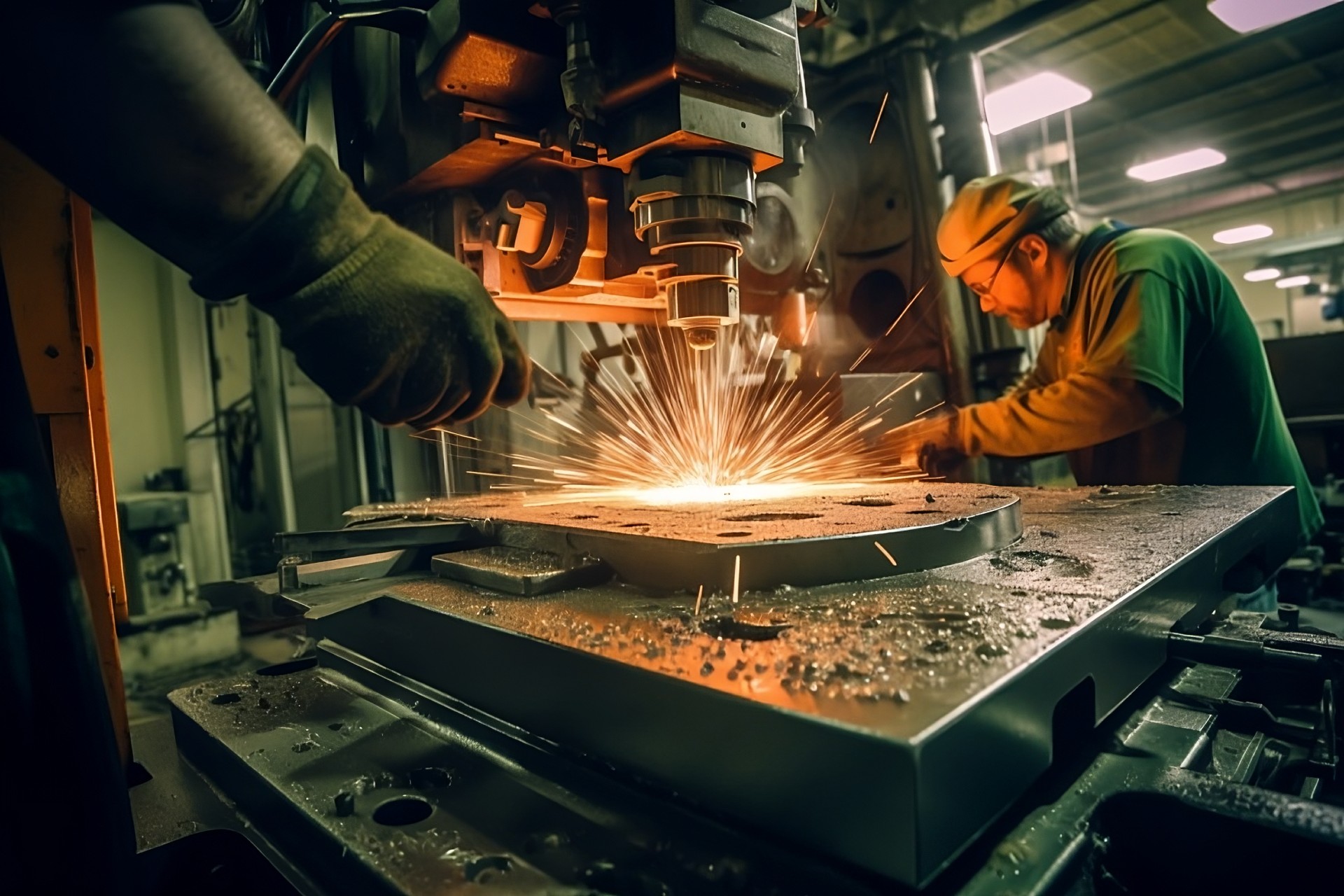
3 Reasons the Electronics Industry Relies on CNC Machining
May 22, 2023 - Emily Newton
Revolutionized is reader-supported. When you buy through links on our site, we may earn an affiliate commission. Learn more here.
Computer numerical control (CNC) machines are incredibly versatile. They can cut, shape and move materials depending on how people program them to work. Such flexibility opens possibilities for people to CNC electronic parts, allowing them to meet numerous requirements. Let’s take a closer look at why people in the electronics industry often prioritize using CNC machines in their manufacturing processes.
1. To Pursue Innovative Designs
The electronics industry thrives on the development of boundary-pushing ideas. Today’s consumers increasingly want sleeker, more eye-catching and thoughtfully designed products. Choosing to CNC electronic parts is a way to fulfill those ideals, as decision-makers at Apple learned many years ago.
In 2008, the company debuted the unibody style for its iconic MacBook Pro laptop. CNC machining allowed creating the computer’s body from one block of material rather than several interconnected parts. Former company employees said Apple purchased more than 10,000 machines to support its production workflow. It didn’t take long before the tech giant adapted its techniques to suit iPads and iPhones, too.
Apple executives were reportedly so enthused about what CNC machines allowed them to do that they struck a multiyear deal with FANUC to purchase all the CNC machines it produced, then still looked for other suppliers. This all occurred during an exponential growth period for Apple, creating the conditions that caused the company’s sourcing experts to scramble while trying to find progressively more CNC machines.
People in the electronics industry and other highly specialized sectors often find that current solutions on the market don’t meet their needs. In one example, a company’s client needed a rack-mount kit with custom brackets and a cable management system. Although CNC machines are not the only manufacturing solutions to consider in cases like these, they’re frequently chosen options due to their flexibility to suit various applications.
2. To Get Orders Fulfilled Quickly
Many people often decide to CNC electronic parts because they know this approach can often suit tight time frames. Such was the case when Sub-CNC Precision — a CNC machining company based in the United Kingdom — was under extra pressure. The business serves various sectors, ranging from electronics to aerospace. It handles a variety of metals and metal alloys based on customer requirements.
Ventilators were in high demand during the COVID-19 pandemic, and modern versions contain electronic components that control the pressure and flow rate. The Sub-CNC Precision team proved its ability to meet needs during the crisis when a client asked it to produce ventilator parts with a short turnaround time. The company successfully made 9,000 of the components in only five days.
Swiss Productions, Inc. is another CNC machining shop with electronics customers on its client roster. Company leaders faced the challenging situation of increasing production output that was already high. More specifically, the company made up to 2 million precision-machined components per 40-hour workweek. But, leaders wanted to ramp up productivity. They began by analyzing some problem areas. One identified issue was that workers couldn’t maximize the spindle time of a certain milling machine.
The leaders solved that problem by deploying a cobot that gave the company an extra 32 hours per week of machine running time and regained the hours lost during employee breaks. One of the few downsides of CNC machining is it produces more waste than other manufacturing options. However, manufacturers can reduce waste in different ways by targeting technology for machine shop improvements.
People don’t necessarily need extensive automation experience to combine cobots and CNC machines. One company offers a no-code robotic solution that enables people to machine parts only two hours after unpacking the product.
3. To Improve Company Processes
Electronics professionals have also explored reasons to CNC electronic parts for process improvement. Since the industry is so fast-moving, there’s ongoing pressure to create new, better products. Research and development timelines are often shorter now than in the past.
Consider Inergy, a solar generator manufacturer with a mission to bring power and the necessary equipment to parts of the world that can’t easily access it. In 2021, Zac Blume, the company’s chief technology officer, began using a desktop milling machine for many of Inergy’s prototyping needs. It allowed prototyping printed circuit boards, heat sinks and more.
Blume said the desktop machine typically allows manufacturing printed circuit boards the same day he designs them. Relatedly, he discussed how seeing and feeling the components makes a substantial difference in testing the feasibility of concepts. Plus, his company can save significant amounts of money by handling prototyping internally rather than the typical process of working with external machine shops and increasing the overall time taken and cost-effectiveness.
Another instance involved Valtech Corporation, a leading maker of ingot slicing beams. These single-use fixturing tools prepare semiconductors for wafering. The company began by molding the slicing beams, then sandblasting them to get the desired shapes. However, this process had notable shortcomings. For example, only 50% of the slicing beams made this way passed quality control minimums. While exploring other options, leaders brainstormed the option of over-molding the pieces and using a CNC machine for shaping.
Now, the company can dry-machine up to 48 parts per tombstone and achieve excellent accuracy. The shop floor is now so active that the dry-cutting process happens for up to 20 hours per day, five days a week, although the company has tweaked several methods to get these impressive results.
Will You CNC Electronic Parts?
Deciding to CNC electronic parts can bring some impressive benefits, as these real-world examples show. However, since it’s not the best option for all situations, you should carefully study your company’s circumstances and needs before proceeding.
For example, do you have CNC machines, or could you source some reasonably quickly? What’s your overall budget, and how much time can you devote to finding out what works and what doesn’t? Some companies mentioned here had to make numerous decisions and changes before ultimately discovering the best ways to deploy CNC machines in their workflows.
Finally, it’s also important to have a realistic perspective and recognize that CNC machines may not wholly replace other equipment in your company. People are more frequently using options like 3D printers to make prototypes of electronic components. That doesn’t mean CNC machines aren’t worth your consideration. However, it highlights the possibility of evaluating more than one piece of equipment to achieve a specific goal, depending on what best suits the individual project.
Revolutionized is reader-supported. When you buy through links on our site, we may earn an affiliate commission. Learn more here.
Author
Emily Newton
Emily Newton is a technology and industrial journalist and the Editor in Chief of Revolutionized. She manages the sites publishing schedule, SEO optimization and content strategy. Emily enjoys writing and researching articles about how technology is changing every industry. When she isn't working, Emily enjoys playing video games or curling up with a good book.






